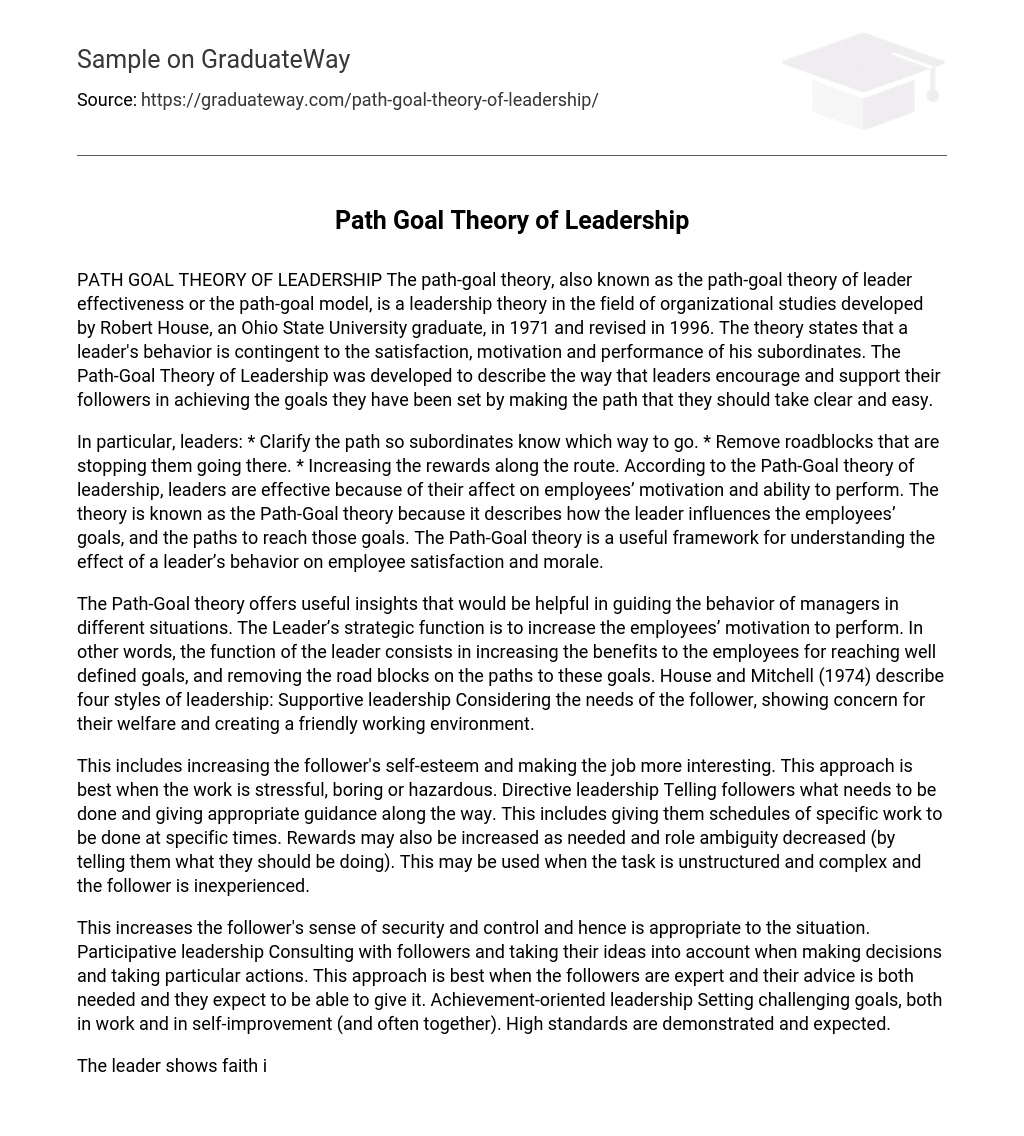The path-goal theory, also referred to as the path-goal theory of leader effectiveness or the path-goal model, was formulated by Robert House, a graduate from Ohio State University. It was initially introduced in 1971 and later revised in 1996. This theory suggests that a leader’s actions are dependent on the contentment, drive, and accomplishments of their subordinates. The Path-Goal Theory of Leadership was devised to illustrate how leaders inspire and assist their followers in attaining their assigned objectives by providing them with clear and accessible paths.
Specifically, leaders:
- Clarify the path so subordinates know which way to go.
- Remove roadblocks that are stopping them going there.
- Increasing the rewards along the route.
The Path-Goal theory of leadership explains that leaders are effective because they impact both the motivation and ability of employees to perform. This theory, known as the Path-Goal theory, focuses on how leaders influence employee goals and the paths to achieve those goals. Understanding the impact of a leader’s behavior on employee satisfaction and morale, the Path-Goal theory provides a valuable framework.
The Path-Goal theory provides valuable insights that can assist managers in guiding their behavior in various situations. The strategic role of a leader is to enhance employee motivation for optimal performance. Essentially, the leader’s function involves increasing the rewards employees receive for achieving specific goals and eliminating any obstacles that may hinder their progress towards these goals. House and Mitchell (1974) defined four leadership styles: Supportive leadership, which takes into consideration the follower’s needs, demonstrates concern for their well-being, and establishes a friendly work environment.
This technique involves boosting the self-confidence of followers and adding excitement to the job. It works well in situations where the work is stressful, monotonous, or dangerous. Directive leadership entails instructing followers on what needs to be accomplished and offering appropriate guidance throughout the process. This includes providing them with specific work schedules for certain times. Rewards can be increased if necessary, and role ambiguity can be reduced by clearly informing followers of their responsibilities. This approach is suitable when the task is unclear and intricate, and the follower lacks experience.
Increased security and control for followers is appropriate in this situation. Participative leadership involves consulting with followers and considering their ideas when making decisions and taking actions. This approach is most effective when followers are knowledgeable and expect to be able to contribute. Achievement-oriented leadership sets challenging goals for both work and self-improvement. The leader demonstrates and expects high standards, while also having faith in the follower’s ability to succeed. This approach is most suitable for complex tasks.
References
- Bass, B. M. (1990). Bass and Stogdill’s Handbook of Leadership. New York: Free Press.
- Likert, R. (1961). New patterns of management, NewYork: McGraw-Hill
- Likert R. (1967). The human organization: Its management and value, NY: McGraw-Hill
- http://en. wikipedia. org/wiki/Leadership_studies
- http://psychology. about. com/library/weekly/aa041502a. htm
- http://www. css. edu/users/dswenson/web/LEAD/path-goal. html





